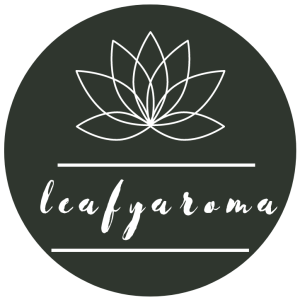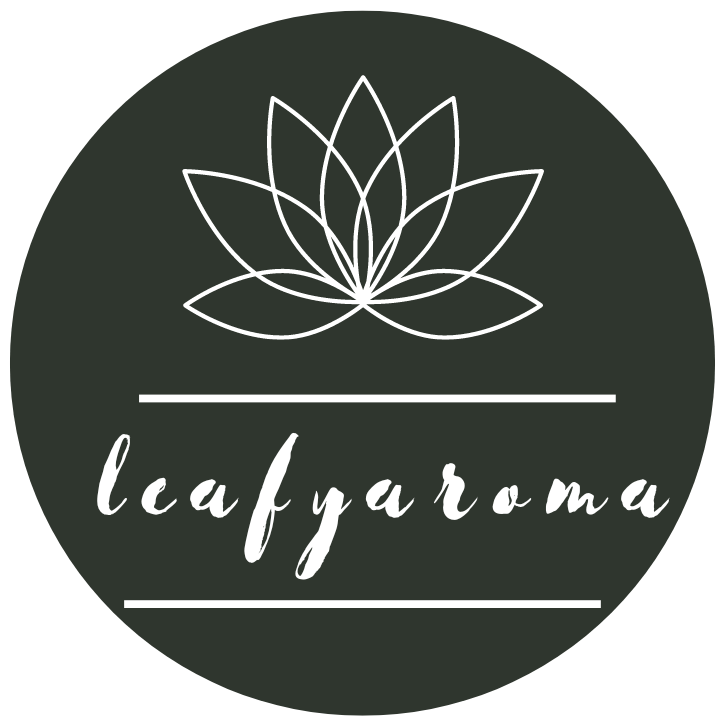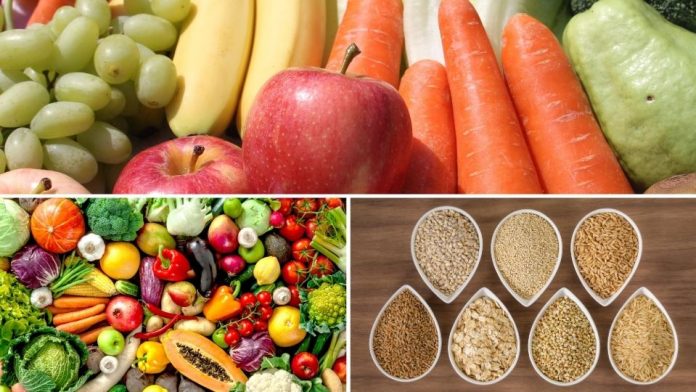Stabilizing Phase Diet is the second step in the healing diet. After achieving the desired health goals with the Healing Phase Diet (Phase 1 Diet), you should start the Stabilizing Phase Diet. It has a similar benefit, as discussed in Healing Diet. It provides more nutritional support to the body and restores energy.
The people who cannot follow the healing phase diet can also start with the Stabilizing Phase Diet (Phase 2) to restore health.
Like other phases, it also stops inflammation. It stabilises the health and helps to prevent deterioration of current health conditions.
It keeps the digestive system healthy, maintains liver health, and stabilises kidney function.
Prerequisite
You should also follow this diet after completing the following two steps:
- Fasting for Healing.
- Healing Phase Diet.
Stabilizing Phase Diet Rules
Many rules are similar to the Healing Phase Diet, with a few exceptions. Here are the basic rules of the Stabilizing Phase Diet (Phase 2):
- Plant-Only Food: Take all food from plant-based sources. Eat more fruits and vegetables in fresh and uncooked form. Choose a variety of fruits and vegetables from different categories.
- Eat More Sattvic Food: Limit the consumption of sattvic-rajasic and rajasic-tamasic foods. Avoid tamasic foods. You should only eat plant-based whole foods. Learn more: Sattvic Food.
- Food Groups: You can take fruits, vegetables, berries, non-starchy vegetables, starchy vegetables, fresh herbs, nuts, seeds, intact whole grains and healing legumes (sprouts, green peas and edamame).
- Intact Whole Grains: Choose intact whole grains from the Healing Grain list given below in this article. You need to slowly introduce whole grains in this diet after following the healing phase diet.
- Eat More Fresh Herbs: Fresh green herbs have potent healing benefits. Therefore, we recommend increasing the amount of these herbs than recommended in the dietary guidelines. If you follow this diet plan, you should eat fresh herbs in the recommended amount given in this article.
- Sunlight: We also consider sunlight as food. Because it helps in reactivating antioxidants, e.g., CoQ10 (in combination with greens – chlorophyll) and the formation of vitamin D in the body. It also has healing benefits. Take sunbath for 30-45 minutes daily. Expose both sides of your body – front and back each for at least 15 minutes. Exposing the whole body to sunlight is recommended. If it is not possible, expose at least 60% of your body to sunlight. You can wear white cotton clothes/shorts while taking sunbath.
- 8-10 Hours Eating Window: Eat your food at a fixed time and within an 8-10 hours eating window. The eating window should be 8 to 10 hours and between 7:00 am to 7:00 pm. Do not eat and drink anything after 7:00 pm. Also, avoid the water after 7:00 pm unless you have a strong thirst. The appetite rule applies if you feel appetite outside the eating window.
- Appetite Rule: Do not suppress appetite. You can eat regardless of the time if you are hungry. You can take fresh fruits and non-starchy vegetables. You should not eat grains, sprouts, legumes, starchy vegetables, nuts, seeds and other foods outside the eating window.
- Chew Well: Be watchful while chewing, enjoy chewing, and feel the taste with each chew. Chew with a calm mind. Do not be in a hurry. Meditate on eating. Make chewing a meditation. If you are using dentures or having difficulty in chewing, then put food in a food processor or blender to make its paste, smoothie, or puree. Eat the paste, puree, or smoothie. You can also add some water for easier consumption.
- Limit Cooking: Eat fruits and non-starchy vegetables in fresh and uncooked form. 60% of vegetables’ servings should be from non-starchy vegetables. You can cook whole grains and starchy vegetables.
- Limit Salt: During this phase, you can eat salt in a limited amount. Your total sodium intake from added salt should not exceed 500 mg a day. You can take 1.25 grams (¼ teaspoon) of salt daily. Use healing spices for making food tastier instead of salt. Healing spices include Black Pepper, Cinnamon, Cumin Seeds, Ginger (fresh), Green Cardamon, Long Pepper, and Turmeric.
- Limit Nuts: Avoid all types of nuts during this phase except walnuts and almonds. You can also take the recommended seeds in the recommended amount.
- Take Vitamin B12: Take at least 25 mcg of Cyanocobalamin twice daily. Generally, 100 mcg tablets are easily available. So, you can take a quarter (1/4) of tablet 2 times a day. Check Vitamin B12 Guide for more details.
- No Added Sugar: You should not take added sugar and sweeteners. Alternatively, you can eat fruits. Also, avoid all artificial sweeteners.
- No Oil & Less Fat: Do not use oils and fats in any form during this phase. You can take avocado and coconut. The total weekly intake of these two fruits should not exceed 600 grams. You can also take nuts and seeds in the recommended amount, as described in this article below.
- No Animal Food: Avoid all animal foods, including eggs, meat, fish, and all dairy products.
- No Processed Food: Avoid all types of processed food.
- No Extracts: Extracted means an individual component of a specific food is extracted to form a new type of food or medicine, e.g., curcumin from turmeric.
- Fasting: Do not take anything except water till 6:00 pm for a day every week. Choose the same day for fasting every week. Take only salad at dinner (at 6:00 pm). Learn more: Fasting for Healing.
- Exercise: Exercise for at least 30 minutes a day. The maximum recommendation is 90 minutes a day during this phase. Try to involve in physical activities. Stop doing exercise if you feel exhausted and get excessive perspiration (even before 30 minutes).
- Massage: You should have a full-body massage (with oil) once a week.
- Gratitude meditation: Gratitude meditation is to express your gratitude and thankfulness to Nature. When you are doing this, you should have a smile on your face and a feeling of happiness inside. You should do it immediately after waking up in the morning, before and after eating food.
- Breathing meditation: Watch your breathing – inhale and exhale, with closed eyes and feeling of happiness and smile on the face. Just watch, do not entangle with it. Watching is key. Do it 2-3 minutes immediately after waking up, 20 minutes in the morning after getting a shower, and 15 minutes before sleeping at bedtime.
- Herbal Medicine: Use herbs for treating diseases. Herbs should also be in their natural form – fresh or powdered (churna). Do not take Herbal extract unless recommended by us. Avoid internal use of essential oils, extracted phytochemicals and chemical-based medicines. For example, take turmeric instead of curcumin and black pepper or long pepper instead of piperine. Consult your doctor for tapering or stopping or change in your current allopathic medicines. Some allopathic medicines may not work well with healing diets. For example, if you are taking antidiabetic medicines, they can cause hypoglycemia with this diet. Therefore, it is necessary to monitor your health regularly and adjust the dosage accordingly. You may not stop all medicines immediately. You may have to taper the dosage before stopping any medicine. Sometimes, you may have to take your current medications for a longer duration. Monitor your health and consult your doctor for any change in health condition and medication requirement.
Recommended Timings
In this phase, you can eat in the following way:
| Timings | Food Types |
| 8:00 AM | Green Herbs’ Smoothie |
| 10:00 AM | Fruits (Group 1 or 2) |
| 1:00 PM (Lunch) | Vegetable Salad + Fresh Herbs + Healing Whole Grains + Cooked Vegetables |
| 4:00 PM | Fruits (from Group 3 or 4) |
| 6:00 PM (Dinner) | Vegetable Salad + Fresh Herbs + Healing Legumes |
- These timings are for illustration purposes. You can choose a fixed time according to your convenience and daily schedule.
- You should eat everything in an 8-10 hours’ window. For example, start breakfast at 8:00 am by drinking vegetable juice and stop eating by taking the last meal (dinner) at 6:00 pm.
Let’s discuss what should you eat and how much do you need in a day.
Early Morning (Green Herbs’ Smoothie)
During this phase, you should stop taking vegetable juice in the morning. We highly recommend taking the green smoothie. Smoothies are better accepted in whole food plant-only (WFPO) diet than vegetable juice.
Recommended Time: 8:00 AM.
You can find more details about Green Herbs’ Smoothie Here to learn how to make it and which ingredients you should use.
Recommended Daily Amount
If you make a smoothie using the recommended method given in here – Green Herbs’ Smoothie, you should take it in the recommended amount given below:
| Age Group | Minimum Recommended Amount |
| 1-2 ** | 60 ml |
| 2-3 ** | 80 ml |
| 4-8 ** | 120 ml |
| 9-11 | 200 ml |
| 12-13 | 250 ml |
| 14-18 | 320 ml |
| 19-50 | 350 ml |
| 51-70 | 320 ml |
| 70+ | 250 ml |
| Pregnant ** | 350 ml |
| Lactating ** | 350 ml |
Note: You can drink more as per your tolerance. The minimum recommended amount is the required amount to get healing benefits.
Mid-Morning (Fruits)
Choose 3-4 types of fruits daily. Choose fruits with different colours from different fruit groups. You should eat fruits from each group. You must include 7 servings of berries every week. Check Fruit Groups in Fruit’s Guide.
Recommended Time: 10:00 am.
| Age Group (in years) | Recommended Servings |
| 1-2 ** | 2/3 Serving |
| 2-3 ** | 1 Serving |
| 4-8 ** | 1 ¼ Serving |
| 9-11 | 1 ½ Serving |
| 12-13 | 2 Servings |
| 14-18 | 3 Servings |
| 19-50 | 3 Servings |
| 51-70 | 3 Servings |
| 70+ | 3 Servings |
| Pregnant ** | 3 Servings |
| Lactating ** | 3 Servings |
Standard Serving Size for Fruits
| Fruit Form | 1 Serving Size equal to: |
| Fresh Fruits (except berries) | 150 grams |
| Fresh or Frozen Berries | 75 grams |
| Dried Berries | 50 grams |
| Dried Fruits (dried apricots, dates, prunes, figs, raisins) | 30 grams |
| Dehydrated Fruit Pulp | 30 grams |
Lunch
In the Stablizing Phase Diet, you can also take intact whole grains and cooked vegetables. You should first eat salad and then eat whole grains with cooked vegetables.
Recommended Time
| Timings | Food Groups |
| 1:00 PM | Salad: Non-starchy Vegetables + Fresh Green Herbs (Coriander, Mint or Basil, etc.) |
| 1:30 PM | Intact Whole Grains + Cooked Vegetables (with healing spices and minimal salt) |
Lunch Salad
Lunch salad should consist of non-starchy vegetables and fresh green herbs. Fresh herbs include coriander, all types of mint and all types of basils. Check more herbs here: Fresh Herbs Guide.
Choosing Salad Ingredients and Ratio
| Cruciferous Vegetables | 20% |
| Fruiting Vegetables | 20% |
| Leafy Greens and Petiole Vegetables | 20% |
| Marrow Vegetables | 20% |
| Root Vegetables | 20% |
| Fresh Green Herbs | As recommended acc. to age |
Find more details about vegetable categories in Vegetable’s Guide. Learn more about choosing vegetables for salad in Recommended and Restricted Vegetables for Salad article.
Recommended Servings
One serving size for uncooked raw vegetables is 150 g. The following table represents the minimum serving amount for vegetables and fresh herbs for making salad according to age group:
| Age Group (in years) | Raw Vegetables | Fresh Herbs |
| 1-2 ** | 1/3 serving (50 g) | 5 g |
| 2-3 ** | ½ serving (75 g) | 7.5 g |
| 4-8 ** | ¾ serving (100 g) | 10 g |
| 9-11 | 1 serving (150 g) | 15 g |
| 12-13 | 1 ¼ serving (190 g) | 22.5 g |
| 14-18 | 1 ½ serving (225 g) | 30 g |
| 19-70 | 2 servings (300 g) | 30 g |
| 70+ | 1 ½ serving (225 g) | 30 g |
| Pregnant ** | 2 servings (300 g) | 22.5 g |
| Lactating ** | 2 servings (300 g) | 30 g |
Cooked Vegetables
One serving size for cooked or boiled vegetables (especially starchy vegetables) is 75 g. You can cook starchy vegetables and start consuming them from this phase.
| Age Group (in years) | Cooked Vegetables |
| 1-2 ** | 1/3 serving (25 g) |
| 2-3 ** | ½ serving (40 g) |
| 4-8 ** | ¾ serving (60 g) |
| 9-11 | 1 serving (75 g) |
| 12-13 | 1 ¼ serving (95 g) |
| 14-18 | 1 ½ serving (115 g) |
| 19-70 | 2 servings (150 g) |
| 70+ | 1 ½ serving (115 g) |
| Pregnant ** | 2 servings (150 g) |
| Lactating ** | 2 servings (150 g) |
Learn How to cook vegetables in the Vegetable’s Guide.
Healing Whole Grains
You can select the grains from the following list:
- Sorghum (Jowar).
- Barley.
- Amaranth (Rajgira).
- Teff (red, brown, and white)
- Farro (Ancient Wheat Grains)
- Emmer (Farro piccolo).
- Einkorn (Farro piccolo).
- Spelt (Farro grande).
- Barnyard Millet.
- Foxtail Millet.
- Kodo Millet.
- Little Millet.
- Browntop Millet.
- Buckwheat.
- Oats.
- Rye.
- Quinoa.
- Bulgur (cracked wheat).
More Details: Whole Grain Guide
Recommended Grains Servings
According to age group, you should choose the recommended daily servings as given below. There is a difference between the recommendation given for this diet and dietary guidelines.
| Age Group | Male | Female |
| 9-11 | 3 servings | 2 ½ servings |
| 12-13 | 4 servings | 3 ½ servings |
| 14-18 | 4 servings | 4 servings |
| 19-30 | 4 servings | 4 servings |
| 31-50 | 3 ½ servings | 3 ½ servings |
| 51-70 | 3 ½ servings | 3 ½ servings |
| 70+ | 2 ½ servings | 2 servings |
Serving Size: Learn about grain’s serving size here: Whole Grains Guide.
How to Cook Whole Grains:
- Wash whole grains well before soaking. Soak whole grains for at least 4 hours before cooking. Use the same water in which grains are soaked for cooking the grains.
- Generally, the ratio of water and most whole grains is 2.25:1 (2 ¼ cups water + 1 cup whole grains).
- Take 2 ¼ cups of water in a pan and 1 cup of whole grains.
- Bring it to a boil, then cook on low flame until the water gets absorbed and grains become soft and eatable.
- Eat cooked whole grains with cooked vegetables.
Evening
In the evening, you can take group 3 or 4 fruits. Check fruit groups here.
Recommended Time: 3:00 pm – 4:00 pm.
| Age Group (in years) | Recommended Servings |
| 1-2 | 1/3 Serving |
| 2-3 | ½ Serving |
| 4-8 | ¾ Serving |
| 9-18 | 1 Serving |
| 19-70 | 2 Servings |
| 70+ | 1 Serving |
| Pregnant | 2 Servings |
| Lactating | 2 Servings |
Standard Serving Size for Fruits: Check above under mid-morning meal.
Alternatively, you can also take Green Herbs’ Smoothie, Fruit Smoothies, or Vegetable Juice.
Dinner
The rules and recommendations for dinner salad are almost the same as the lunch salad above in this article. Dinner salad also consists of vegetables, fresh green herbs, healing legumes and soaked almonds and walnuts.
Recommended Time: 6:00 PM.
Food Groups
| Food Group | General Recommendation |
| Cruciferous Vegetables | 20% |
| Fruiting Vegetables | 20% |
| Leafy Greens and Petiole Vegetables | 20% |
| Marrow Vegetables | 20% |
| Root Vegetables | 20% |
| Fresh Green Herbs | As recommended acc. to age |
| Healing legumes | As recommended acc. to age |
Find more details about vegetable categories in Vegetable’s Guide. Learn more about choosing vegetables for salad in the article – Recommended and Restricted Vegetables for Salad.
Fresh Green Herbs: Choose any two fresh green herbs from the list given in Fresh Herb Guide. It generally includes coriander, mint (all types) and basil (all types).
Healing Legumes: It includesFresh edamame, mung sprouts and fresh green peas. Mung sprouts are the best among other sprouts and highly recommended.
Recommended Servings for Dinner
One serving size for uncooked raw vegetables is 150 g. The following table represents the recommended serving amount for vegetables, fresh herbs and legumes (sprouts) for making salad according to age group:
| Age Group (in years) | Raw Vegetables | Fresh Herbs | Legumes |
| 9-11 | 1 serving (150 g) | 15 g | 100 g |
| 12-13 | 1 ½ serving (225 g) | 22.5 g | 125 g |
| 14-18 | 2 serving (300 g) | 30 g | 150 g |
| 19-50 | 2 ½ serving (375 g) | 30 g | 150 g |
| 51-70 | 2 serving (300 g) | 30 g | 125 g |
| 70+ | 1 ½ serving (225 g) | 22.5 g | 125 g |
Soaked Nuts
Soaked almonds and walnuts should be the main nuts. You should avoid all other nuts during this phase.
Recommended Servings for Nuts
The serving size is in the number of almonds and walnuts.
| Age Group (in years) | Almonds | Walnuts |
| 1-2 ** | 2 | ½ |
| 2-3 ** | 3 | ½ |
| 4-8 ** | 5 | 1 |
| 9-10 | 6 | 2 |
| 11-12 | 7 | 3 |
| 13-14 | 9 | 3 |
| 15-18 | 11 | 4 |
| 19-70 | 11 | 4 |
| 70+ | 7 | 3 |
| Pregnant ** | 11 | 4 |
| Lactating ** | 11 | 4 |
You should soak nuts in water for at least 6 hours before eating. You can soak nuts in the morning and eat at dinner.
Duration
The Stabilizing Phase Diet is recommended to follow after the Healing Phase Diet for about 3 months. After 3 months, you should follow the Preventing Phase Diet, which is recommended for lifelong.
Indications of Stabilizing Phase Diet
The Stabilizing Phase Diet has the same indications as to the Healing Phase Diet. It is incredibly useful in the following conditions:
- Inflammatory Disorders.
- Arthritis.
- Heart diseases.
- Obesity and its complications.
- Diabetes and its complications.
- Hypothyroidism.
- Polycystic ovarian syndrome (PCOS).
- Atherosclerosis.
- Stroke.
- Hypertension.
- All types of cancer, especially colon cancer.
- Blockage in blood vessels.
- Skin Diseases.
- All chronic diseases.
- Kidney disorders.
- Hyperacidity, Ulcers and GERD.
Some foods might not be suitable in some cases. You may need to work on selecting food according to tolerability, health condition and dosha. An experienced practitioner can help you with this. You may also require herbal treatment for the disease in addition to this diet. Consult herbalist, naturopath or ayurvedic practitioner for the same.
Contraindications
You should not follow this plan if you have from any of the following the condition:
- Children: This diet plan is not for children under the age of 9 years. Children under the age of 16 should follow this diet under professional supervision. A careful selection of foods may require a case-to-case basis.
- Pregnant women: This diet is not suitable for pregnant women. Pregnant women should directly adopt the Phase 3 Diet.
- Lactating mothers: This diet is also not recommendable for lactating women. They should directly follow the Phase 3 Diet.
- Underweight & Vata Aggravation: Underweight people suffering from Vata Diseases should not follow this diet without professional advice. If you select the right foods, it might be helpful. Based on your individual health goals, alternation may require in the recommendation. You may directly follow the Phase 3 Diet.
- Health conditions require fluid restriction: This diet includes water-rich foods. Fruits and vegetables contain around 90% water content. Generally, this diet provides around 1.5-2 litres of water a day.
Warning & Disclaimer
This diet is not for everyone. This diet is also not suitable for children under 9, pregnant women and lactating mothers without professional supervision. It may help some people but may also be potentially harmful to others. Consult your healthcare provider before making any dietary changes. Also, check a few contraindications listed above. You should not follow this diet for more than 3 months without professional supervision. Read Disclaimer for more information.



